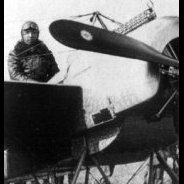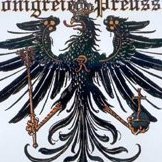Search the Community
Showing results for tags 'Albatros D.Va'.
-
Hey everyone, It has been a long time since my last post on this forum. I'm still working on finishing my Wingnut Wings Fokker EII (see my other post), which has progressed rather slowly since last September as i had to focus on the reconstruction of my house instead (model building in 1:1 scale i guess!). But, work on the house is almost done now and whilst i'm looking to finish the Fokker, i've also picked up & started with another Wingnut Wings kit: their Albatros D.Va "Bavarians" limited edition. I've decided to build the version as flown by Michael Sigmann, which i've named the "midnight" Albatros due to de darkblue/stars decoration. Here's a snapshot of the kit + the version i'm going for: I've made a start with the engine, which has turned out quite nice (see photo below). As i want to leave the engine cowling partly open, i've decided to add extra detail to the engine. I've added Taurus spark plugs + have used electrical wire to conncect the sprak plugs to the engine as per the photo's of the actual motor. Man, those sparkplugs & wires are TINY! It took me an entire afternoon with trial and error to make just one side look a bit like the real thing. I'm ok with how it looks now. I didn't want to make a bright and shiny factory fresh engine, so while painting i added some subtle rust, oil and chipping effects. Apart from the engine, i've also started with the pilot's seat, but i managed to drop the seat compartment while working on it and in an automatic reaction trying the catch it before it fell to the ground i crushed all the small parts..............ouch. This will need some time for carefull repair. Will be posting again when i've made some progress!
-
My apologies, but this should've been posted into 'Ready for Inspection'... anyway, the end result is the same... ;-). This is my third venture into the world of 1/32 scale WW1 aircraft. The work on this kit was inspired by the front cover and article in the 'Iron Cross' publication from last summer, Issue 2. This is a relatively new quarterly publication regarding the German armed forces from 1914-1945. The article covers various matters, not least the day today life of a pilot of the Imperial Fliegertruppe during the last months of WW1. It also sheds light as to why the initial interpretation of the colour scheme from period photos is possibly now inaccurate, and offers the colour scheme on this model as a more likely representation of Josef Kister's aircraft. This kit has been finished to represent a D.Va variant, although due to my own mistake, there are errors with the aileron actuators and consequent lack of some associated rigging; in fairness, this is the 'Richthofen'-specific WnW kit and although it has the correct interplane struts for the outer wings included as part of the kit, the parts for the correct D.Va aileron detail would not have been required in this kit. If nothing else, it should teach me to pay more attention. In my own defence, this was apparently the only available version on the market when I bought it. No matter, on to the build; the first image below shows the internal surfaces of the fuselage painted up to represent a wood effect finish. This comprises a base coat of white, followed with pale tan, then mid tan. All colours are enamels. Thereafter, some small spots of transparent oxide yellow oil paint were applied behind the bulkhead location and gently buffed to the appearance you see here, and burnt sienna oil paint to the forward section. Although the colour behind the bulkhead will not be seen, it provided an area for me to hone my oil painting skills a little more. Once fully dry, the burnt sienna shade was carefully and very lightly reapplied to the framework on the forward fuselage interior just to highlight the detail. This was left un-buffed. The various additional parts representing the internal frames, the sides and rear of the pilot's seat and the propellor were all treated in the same manner, with a very light dusting of homemade blackwash to darken the propellor blades slightly. The wings and horizontal tailplane were all finished in lozenge pattern; the transfers seen here are from the Aviattic range; they settle very nicely with a little patience. Always remember to pre-paint the relevant surfaces to be covered with lozenge transfers white and then gloss varnish; this brings out the best from the transfers during and after application. As my subject model had an extremely pale blue, almost off-white, background to both upper and lower wing crosses, and having clumsily attempted this with painted strips of transfer sheet, I eventually elected to hand-paint the backgrounds. This was a slow process and care had to be taken in measuring out the correct position and dimension, and the progress made can be seen in these following three photos, applying the coats very thinly and building up their strength gradually. In the last of these three photos, you can also see the assembled fuselage, with seat belts in position along with the engine and other sundry items. The machine guns have still to be attached at this point. The markings of this aircraft included a large yellow '6' and a smaller red '6' above and below the wings respectively, on the left side, and a red six with yellow outline on both sides of the fuselage. Again, I chose to apply these freehand, by paint brush. The first photo below shows me outlining the dimension of the upper wing numeral. The strips of black transfer for the crosses were sourced from the spares box and applied to the wing. In this image, you can see the completed yellow '6' on the wing; the wing crosses have received their thin white outline, just visible against the very pale blue backgrounds. A block of yellow has been applied to either side of the fuselage and once dry, a red '6' will be superimposed, with the excess yellow thereafter being painted out with a further application of pale blue, thus creating a yellow outline around the number. Next up, a view of the completed sections so far. The underwing red '6' has been applied and the outline to the fuselage number has been finished as well; this takes time and patience to go round the number with a small, thin paint brush, touching up the detail until it looks acceptable. The lower wing roots are left in natural wood presentation. The following photo shows the preparation for the next characteristic of this colour scheme. So, a question.. where would we all be without the ubiquitous Tamiya tape? Answer - heaven's knows! Strips of tape have been applied over the fuselage to block off the relevant sections of pale blue, naturally after the paint on the numbers has dried; they were later cut away from around and behind the number for reasons that will become apparent soon. I deliberately left the rear fin unpainted so as to give me a place to hold the fuselage while painting it. The unusual red flecking on the wing crosses has also been added, as can be seen on the upper wing in the background. This is the bit that excites and frightens me in equal measure! In this case, flame red is applied to the exposed areas of the fuselage, brushing inwards from the tape towards the centre. Thin paint and slow application are best - the paint will dry quicker if thin, and going slow reduces the risk of seepage under the tape, thus hopefully ensuring a clean finish. Here, you can seen where the tape was cut away prior to applying the red. The main section at the front of the fuselage is just about to be uncovered. The reason for not extending the red stripes up to the number 6 is because there is an optical illusion of a blue background to the cross, and that it 'cuts through' the red in the area of the number, and because the stripes (intentionally) cut through the crosses at a slightly different level on either side of the fuselage, I though it best to complete them by hand. Below, you can see the red stripes have been 'carried through' the number 6 with very careful hand painting; the fuselage cross will be applied in due course in the area behind the number, and then the red stripes can be completed as appropriate, in order to produce the optical illusion of a blue outline to the national marking. You may just be able to see the the first red stripe on the upper fuselage starts aligned to the right side of the fin edge heading forward; the first blue stripe starts from the left side of the fin edge, thus creating the irregularity of position of the stripes on the sides, and this has to be taken into account when creating the illusion of the background to the cross. In the next two photos, the lower wings have been attached; slight droop may be noted in the second photo, but this was rectified when the struts and upper wing were attached... no need to panic! It isn't readily obvious here, as the discrepancy is so slight, but the engine front sits fractionally too high. The frames holding the engine did give cause for a few heated exchanges between me and them, but I won... well, almost. Nonetheless, it does look very smart once the engine is installed; you may also see a lozenge pattern to the front of the fuselage bulkhead, behind the pilot's seat. The fuel tank, MG magazines and various aspects of engine detail are all in evidence here. The fuselage was blackwashed slightly to bring out the panel detail, and at last, you can see the completed stripes and the blue 'background' to the cross. You will see the subtle differences on either side if you look closely. So, now we're approaching the end of the build. First up, a nice shot of the undersides of the model along with a hint of some of the rigging in place. There were a good few turnbuckles required for this model, sourced from the GasPatch range. The Albatros must have been one of the most heavily-rigged single-engined fighters possessed by the Germans. Additional blackwashing was applied to the tail skid, wheels, undercarriage legs and propellor spinner. The front of the engine block was made flat and a plastic card tab of appropriate dimension was added to the engine front and painted accordingly, as it can just be seen through the open cowling. The propellor spinner was then able to be permanently fixed at the correct position without anyone knowing that the engine itself was slightly misaligned. The rear of the tail fin, plus the rudder, were painted with white oil paint. The forward fin on the right side was blue, and red on the left side; the the small windshield was also attached in front of the cockpit area. These last three images are ones which I think really show the model off well. I like the colourful camouflage scheme as it is a little out of the ordinary compared to other, better known options. Thanks for looking in, and I hope you like the finished model... 😉 Regards, Paul
- 12 replies
-
- 16
-

-

-
- Albatros D.Va
- 1/32
-
(and 1 more)
Tagged with:


